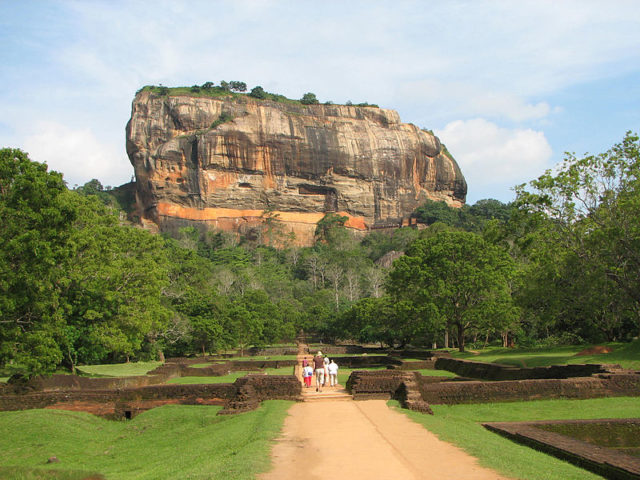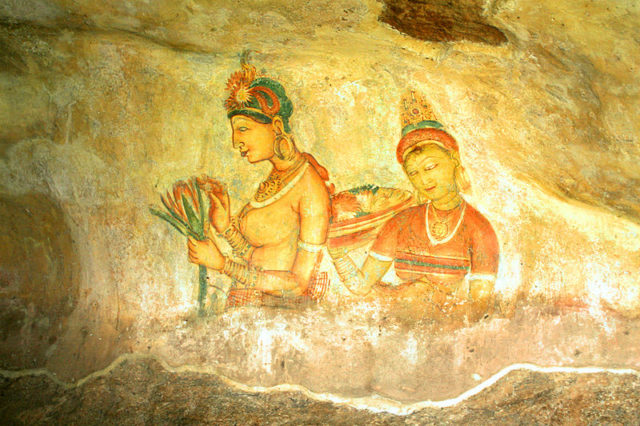Standing tall amidst thick forests, surrounding it like a green army guarding the flag-bearer; the natural monolith in Sri Lanka is one of a kind.
Rising high above the central plains of the Sigriyan wilderness, this mostly rocky outcrop is considered the single most mesmerizing and dramatic sight in the entire region. The near vertical walls reach up to a flat-topped peak crowned the ruins of an ancient civilization.
The monolithic rock is believed to have been the epicenter of the ancient Kingdom of Kassapa, a rather short lived culture that left a very visible signature for the wider world to remember them by.

Once at the summit, one is welcomed by the gripping sight of the fortified palace that was built by, and in honor of, King Kasyapa, who ruled the region between 477AD to 495AD. The legend of King Kasyapa’s journey to the throne is one of betrayal and bloodshed. The son of Dhatusena (who later became King Kasyapa) engineered the murder of his own father. Kasyapa had to adhere to this cruel method in order to keep his brother, and next in line for succession, Mogallana away from the throne.
After the successful assassination of his father, Kasyapa grabbed the throne and built the garrisoned palace for himself. Legend has it that the assassination of his own father made King Kasyapa extremely paranoid about his own safety. One person that Kasyapa feared the most was his own brother, to whom the throne rightfully belonged; hence the palace on the rock which was considered by the King the safest place for him against organized armies or even stealthy assassins.

After overcoming his initial paranoia, King Kasyapa turned to a more lavish lifestyle; one that really suited a king. The moats that surround the rocky outcrop were filled with crocodiles to make them even more scary and unapproachable.
In all, Kasyapa resided at the palace on the rock for eleven years, and by the end of that period he had created a splendid residence for himself and his loyalists. However, his indulgence in the Kingly lifestyle made Kasyapa complacent of the looming threat, giving his brother the opportunity to strike, once and for all.
Despite the over the top security measures (literally over the top), Kasyapa could not escape the vengeance of his brother Mogallana. In 495AD Mogallana arrived at the site and declared war on the self-proclaimed King by besieging his fortified palace.
The actual battle did not last very long but was hard-fought and extremely bloody. At the end of the battle, with his army hopelessly outnumbered, King Kasyapa saw no way out and committed suicide. Mogallana seized the palace and shifted the capital to its original place. The site later turned into a religious monastery and is now perhaps the most visited historic site in the region, with its splendid views and exquisite structure.
